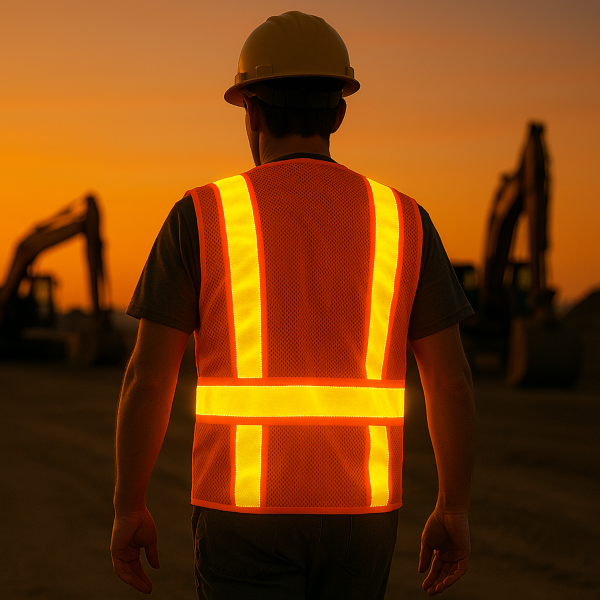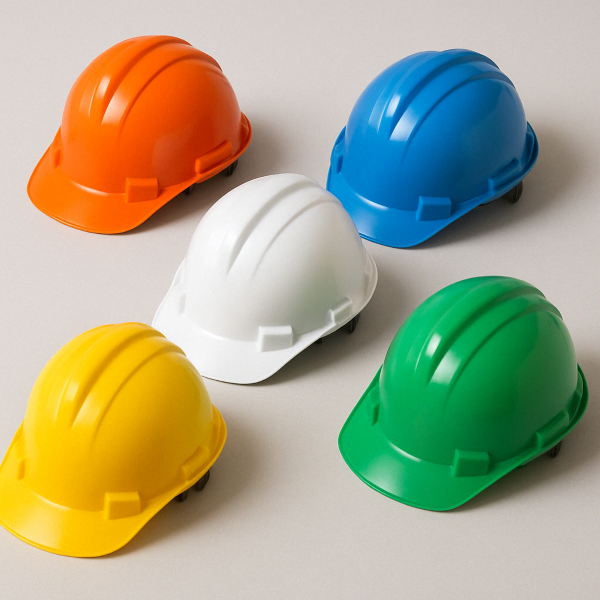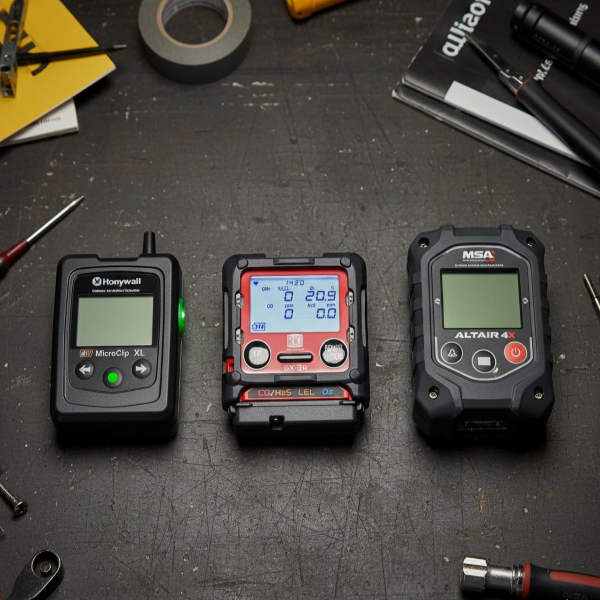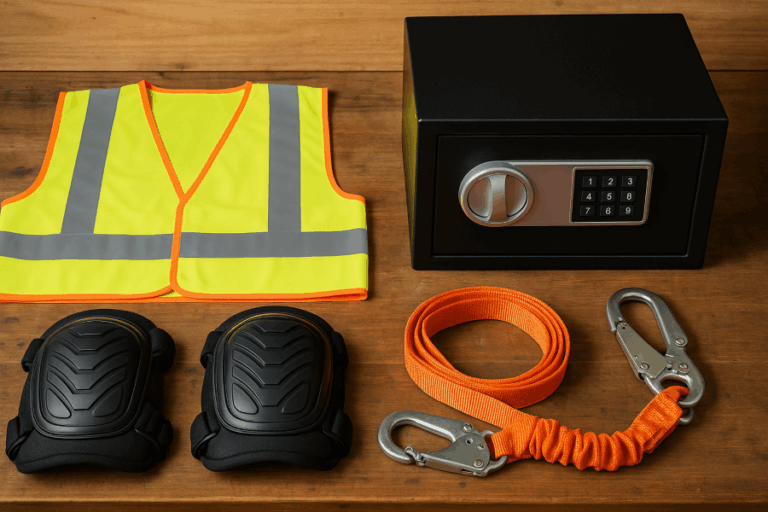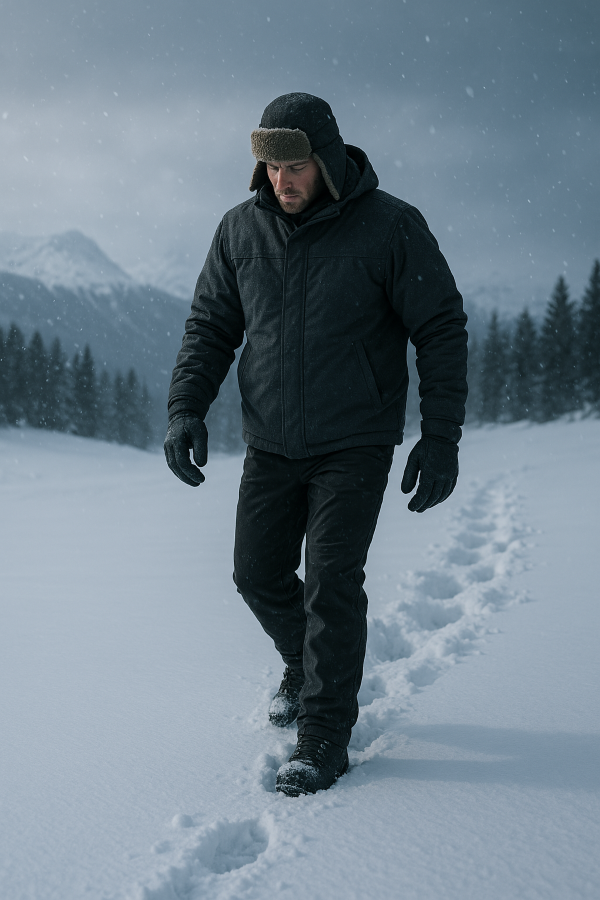What is PPE? A Complete Guide to Personal Protective Equipment
🕰️ The Evolution of PPE: A Brief History
- Ancient Times: Use of protective gear like gloves and rudimentary masks.eCampusOntario Pressbooks
- Middle Ages: Plague doctors’ beaked masks designed to filter out “miasma” or bad air.Wikipedia+4umass.edu+4Wikipedia+4
- 16th Century: Leonardo da Vinci’s early respirator concepts.Wikipedia+1Tam Oilfield Services+1
- 18th Century: Physicians began using gloves made from materials like sheep intestines during patient examinations .CEUfast
- World War I: Introduction of gas masks and other protective gear for soldiers.
- Early 20th Century: Development of surgical masks and further advancements in PPE during pandemics.
- Modern Day: PPE has become essential across various industries, especially highlighted during the COVID-19 pandemic.
Let’s face it—whether you’re on a construction site, in a hospital, or working with hazardous materials, staying safe isn’t optional. That’s where PPE, or Personal Protective Equipment, comes into play. It’s the gear that helps protect you from serious risks on the job.
But what exactly is PPE, and why should you care?
In this guide, we’ll break it all down: what PPE is, the different types available, and how to pick the right equipment to keep yourself safe.
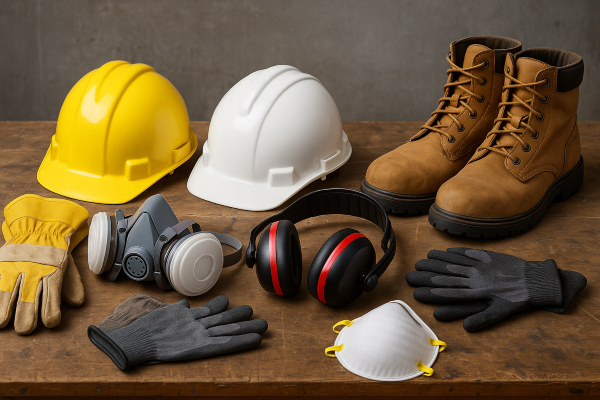
What is PPE?
PPE stands for Personal Protective Equipment. It includes a range of clothing and gear designed to protect you from physical, chemical, biological, or environmental hazards. The goal is simple: reduce the risk of injury or illness when other safety controls aren’t enough.
Common Types of PPE
Here’s a breakdown of the main categories of PPE and their typical uses:
1. Head Protection
- Equipment: Hard hats, bump caps
- Use Case: Construction sites, industrial zones
- Protection Against: Falling objects, head injuries
2. Eye and Face Protection
- Equipment: Safety goggles, face shields
- Use Case: Labs, manufacturing, woodworking
- Protection Against: Chemical splashes, flying particles
3. Hearing Protection
- Equipment: Earplugs, earmuffs
- Use Case: Airports, construction, heavy machinery
- Protection Against: Loud noises that can cause hearing loss
4. Respiratory Protection
- Equipment: N95 masks, full-face respirators
- Use Case: Medical settings, painting, chemical handling
- Protection Against: Airborne particles, toxic gases
5. Hand Protection
- Equipment: Latex, nitrile, or leather gloves
- Use Case: Medical exams, welding, food service
- Protection Against: Cuts, burns, chemical exposure
6. Body Protection
- Equipment: Lab coats, aprons, hazmat suits
- Use Case: Chemical labs, medical environments
- Protection Against: Splashes, flames, contaminants
7. Foot Protection
- Equipment: Steel-toe boots, anti-slip shoes
- Use Case: Warehouses, kitchens, factories
- Protection Against: Crushing, slipping, punctures
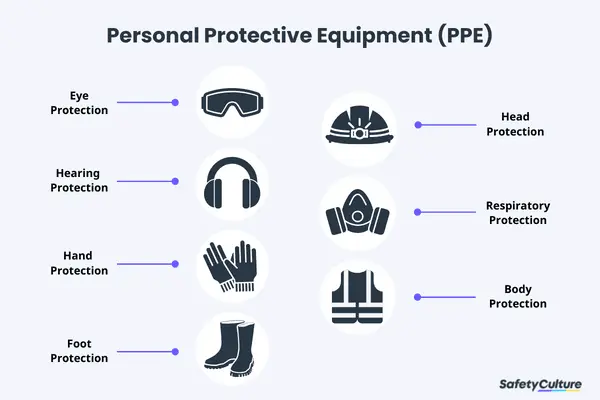
How to Choose the Right PPE
Choosing the right PPE isn’t one-size-fits-all. Here’s what to consider:
- Hazard Type: Understand the risks in your environment.
- Fit and Comfort: Ill-fitting gear can reduce protection and increase discomfort.
- Compliance: Ensure gear meets OSHA, ANSI, or other relevant safety standards.
- Durability: High-quality materials offer better longevity and protection.
- Ease of Use: Select gear that allows for quick removal or adjustment.
Safety Tips for Using PPE
- Inspect Before Use: Always check for damage or wear.
- Proper Training: Know how to wear, adjust, and remove PPE correctly.
- Clean Regularly: Keep gear sanitized and in good condition.
- Replace When Needed: Don’t use expired or damaged equipment.
- Store Correctly: Keep PPE in a clean, dry area.
Use Cases by Industry
Construction:
- Must-have PPE: Hard hats, safety goggles, steel-toe boots, hearing protection
Healthcare:
- Must-have PPE: Gloves, face masks, gowns, face shields
Manufacturing:
- Must-have PPE: Respirators, cut-resistant gloves, safety glasses
Chemical Handling:
- Must-have PPE: Full-body suits, chemical-resistant gloves, goggles
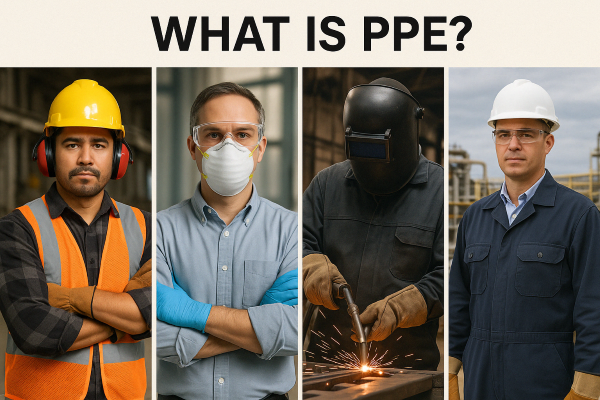
Comparison Table: Essential PPE Gear
| PPE Type | Example Equipment | Protection Against | Ideal For |
|---|---|---|---|
| Head Protection | Hard Hat | Impact from falling objects | Construction |
| Eye Protection | Safety Goggles | Flying debris, chemicals | Labs, factories |
| Respiratory Gear | N95 Mask | Airborne particles | Healthcare, painting |
| Hand Protection | Nitrile Gloves | Chemicals, cuts | Medical, lab work |
| Foot Protection | Steel-Toe Boots | Crush injuries, punctures | Industrial settings |
🧠 Did You Know? Fascinating Facts About PPE
- Ancient Origins of Gloves
Protective gloves have been used for thousands of years. In Homer’s Odyssey, dating back to the 8th century B.C., there’s a mention of Laertes wearing gloves to protect his hands from thorns while gardening . - Early Respirator Concepts
Leonardo da Vinci, in the 16th century, proposed using a finely woven cloth dipped in water as a protective mask against toxic agents, laying the groundwork for modern respirators . - Plague Doctor Attire
During the 17th century, plague doctors wore distinctive beaked masks filled with aromatic substances, believed to purify the air and protect them from disease . - PPE in World War I
The First World War saw the widespread use of PPE, including respirators, to protect soldiers from chemical warfare agents . - Modern Surgical Masks
The concept of surgical masks was advanced during the 1910–11 Manchurian plague outbreak, where Dr. Wu Lien-teh promoted their use to prevent disease spread .
Conclusion
PPE isn’t just a box to check—it’s a critical element of safety in any hazardous environment. From steel-toe boots to respirators, the right equipment can mean the difference between a close call and a serious injury. Take the time to assess your needs, choose gear that fits properly, and stay up-to-date with safety guidelines.
Remember: Your safety is your responsibility, and PPE is your best ally.
Ready to gear up? Use this guide as your starting point to invest in the PPE that keeps you safe and compliant.

